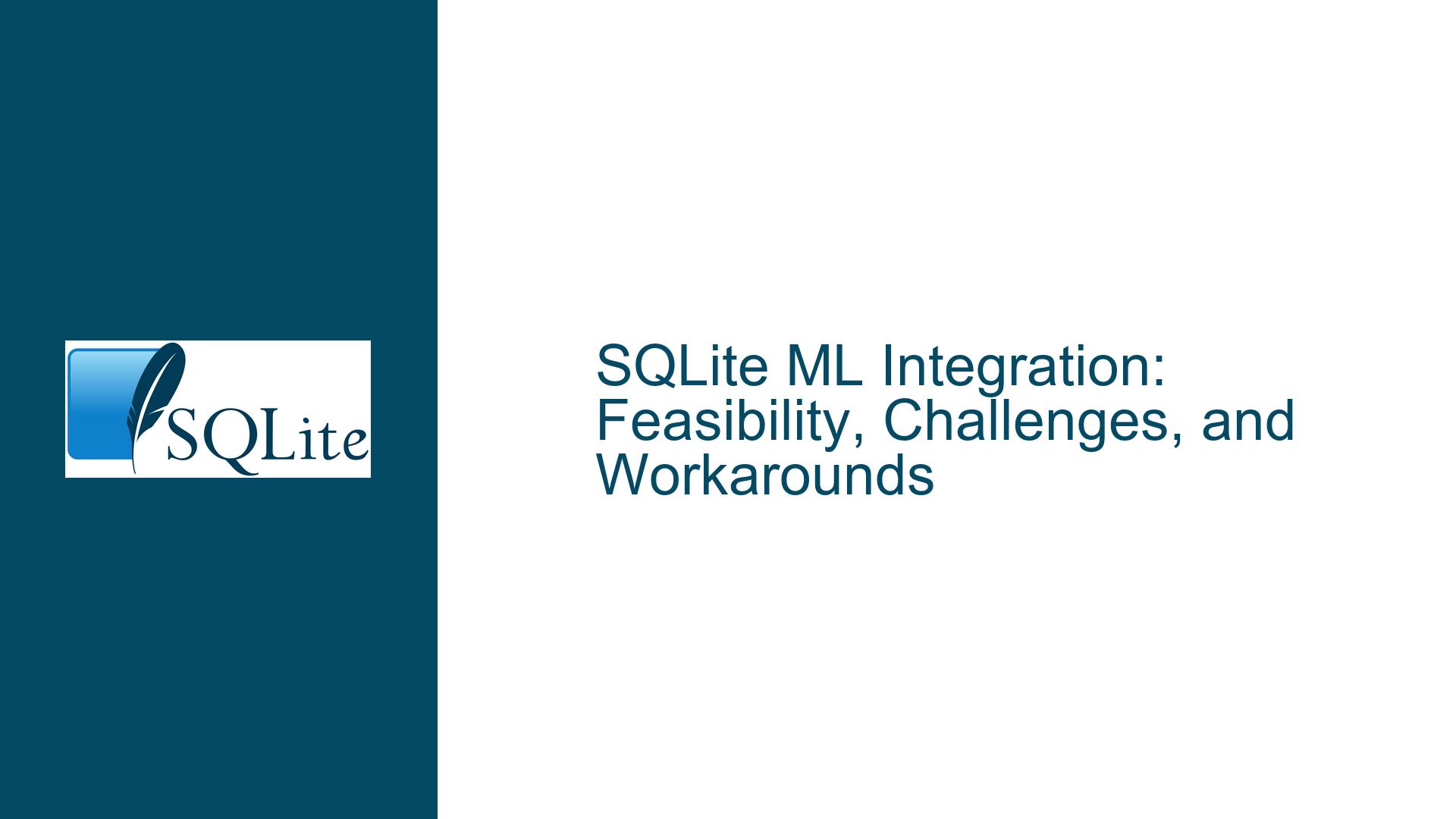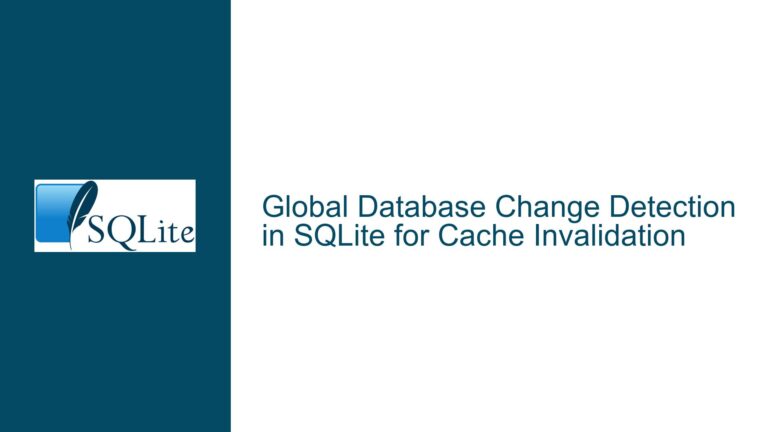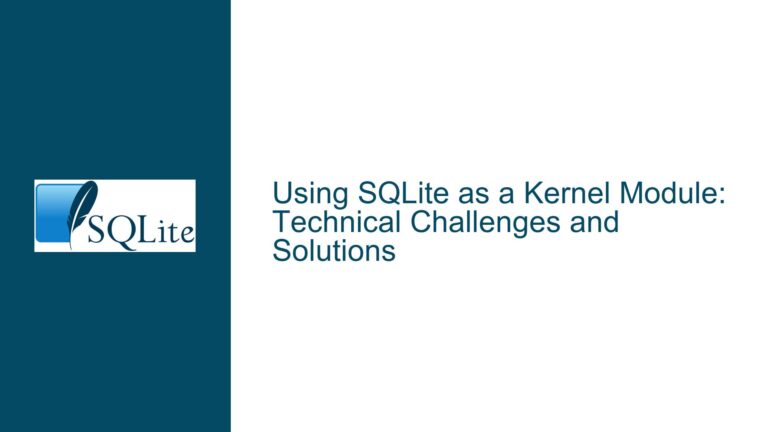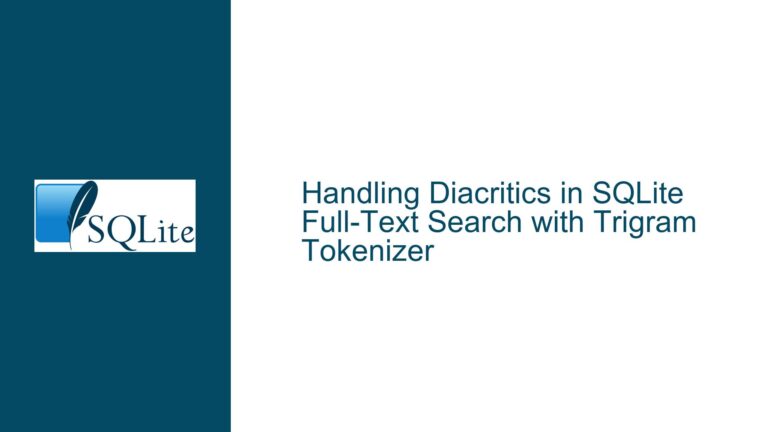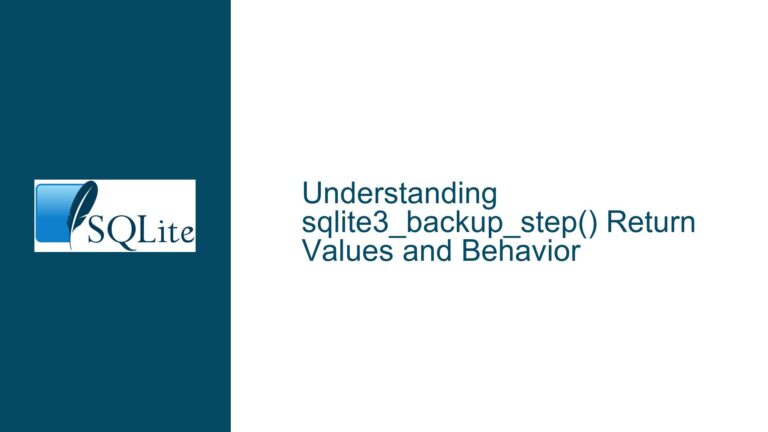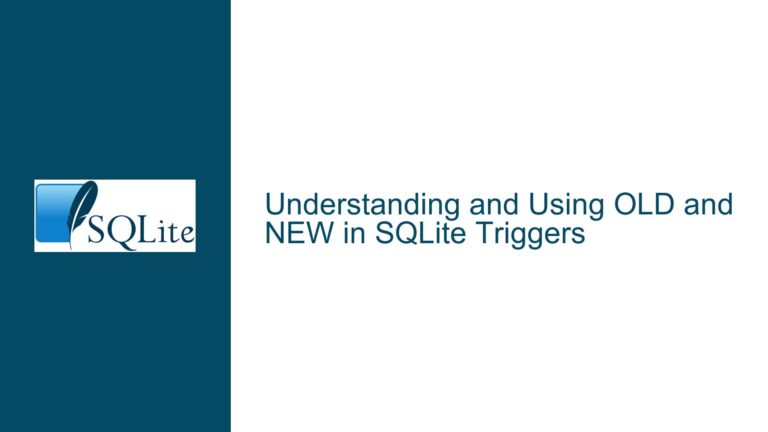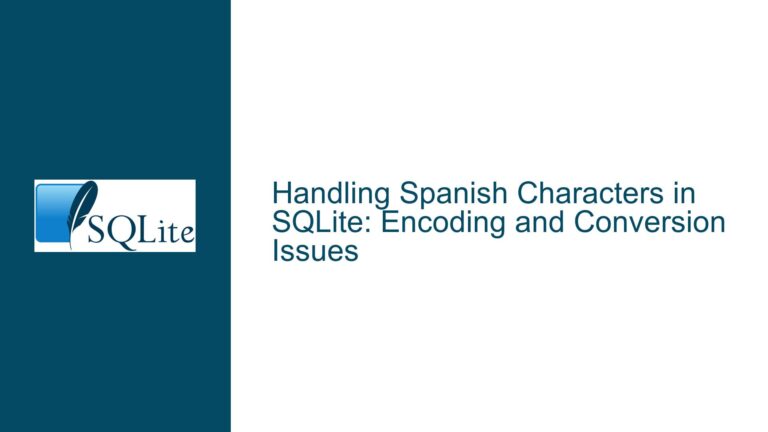SQLite ML Integration: Feasibility, Challenges, and Workarounds
Desire to Embed Machine Learning Models in SQLite
Issue Overview
The core question revolves around whether SQLite should or could natively integrate machine learning (ML) models to parse stored data and answer non-trivial queries. Proponents argue that SQLite’s ubiquity, portability, and lightweight design make it an attractive candidate for embedding ML inference capabilities directly within the database engine. For example, users might want to run anomaly detection on tabular data, classify text columns via natural language processing (NLP), or generate predictions using pre-trained models without exporting data to external systems.
However, the SQLite development philosophy prioritizes simplicity, reliability, and backward compatibility. Native ML integration would introduce significant complexity, including dependency management for ML frameworks (e.g., TensorFlow, PyTorch), runtime inference overhead, and version compatibility challenges. The discussion highlights divergent perspectives: while some see value in SQLite acting as a "smart" data catalog for ML workflows, others emphasize its role as a storage layer, with ML logic delegated to external tools.
Technical hurdles include:
- Data Serialization Formats: Storing ML models (e.g., Keras, scikit-learn) or numerical arrays (e.g., NumPy) as SQLite BLOBs requires standardized serialization/deserialization methods.
- Type Recognition: Differentiating between raw binary data (e.g., images) and serialized ML artifacts without explicit metadata.
- Execution Environment: Running model inference within SQLite’s process space would demand integration with language runtimes (Python, R) or ML frameworks, conflicting with SQLite’s minimalistic design.
The thread also explores hybrid approaches, such as using SQLite extensions to add ML capabilities without modifying the core codebase. However, even extensions face challenges like maintaining parity with SQLite versions and handling platform-specific dependencies.
Why SQLite Core Won’t Natively Support ML Models
Possible Causes
- Philosophical Alignment: SQLite’s design mandates a compact, self-contained codebase with zero external dependencies. Embedding ML frameworks would violate this principle by introducing heavy dependencies (e.g., Python interpreters, CUDA libraries) and bloating the binary size.
- Type System Limitations: SQLite’s dynamic typing and BLOB handling lack native support for structured metadata (e.g., MIME types) to distinguish ML artifacts from generic binary data. While the JSON1 extension introduced subtypes, these are insufficient for automatic deserialization of complex objects like neural network weights.
- Maintenance Overhead: Third-party extensions interfacing with ML ecosystems would require constant updates to track API changes in ML frameworks (e.g., TensorFlow 1.x vs. 2.x) and SQLite itself. This creates a maintenance burden incompatible with SQLite’s conservative update cycle.
- Performance Constraints: ML inference often requires GPU acceleration or multithreading, which SQLite’s single-threaded design and transactional guarantees cannot accommodate without significant architectural changes.
- Security Risks: Allowing arbitrary model execution within SQLite could expose vulnerabilities, such as deserialization attacks or unsafe operator implementations (e.g., custom SQL functions written in Python).
The discussion also highlights precedent: past attempts to extend SQLite with domain-specific logic (e.g., GIS functions) have struggled with long-term viability due to version drift and compatibility issues.
Implementing ML Workflows with SQLite: Practical Strategies
Troubleshooting Steps, Solutions & Fixes
1. Use SQLite as a Passive Data Catalog
Store ML artifacts (models, training data, hyperparameters) as BLOBs while managing inference externally. For example:
- Serialize NumPy arrays via
numpy.saveand store as BLOBs. - Save Keras models using
model.save()and write the resulting HDF5 file into a BLOB column. - Use SQLite tables to track model versions, training epochs, and evaluation metrics.
Pros:
- No changes to SQLite required.
- Leverages existing Python ML tooling (e.g., pandas for data loading, TensorFlow for inference).
Cons:
- Manual deserialization required when reading BLOBs.
- No native query integration (e.g.,
SELECT PREDICT(features) FROM data).
2. Develop Custom SQLite Extensions for Type Handling
Create loadable extensions that register custom SQL functions and type handlers:
- CBOR Encoding: Use Concise Binary Object Representation (RFC 8949) with tags to embed metadata (e.g.,
numpy.ndarray,keras.Model) within BLOBs. During query execution, decode CBOR and dispatch to appropriate Python/R functions. - Subtype APIs: Utilize
sqlite3_value_subtype()to mark BLOBs with integer subtypes (e.g., 1 for NumPy, 2 for TensorFlow). Pair this with a Pythonsqlite3adapter that checks subtypes and deserializes objects automatically.
Example Workflow:
import sqlite3
import numpy as np
from cbor2 import dumps, loads
def adapt_numpy(arr):
return dumps(arr, default=lambda x: x.tolist() if isinstance(x, np.ndarray) else x)
def convert_numpy(blob):
return np.array(loads(blob))
sqlite3.register_adapter(np.ndarray, adapt_numpy)
sqlite3.register_converter("NDARRAY", convert_numpy)
conn = sqlite3.connect(":memory:", detect_types=sqlite3.PARSE_DECLTYPES)
conn.execute("CREATE TABLE data (id INTEGER, features NDARRAY)")
conn.execute("INSERT INTO data VALUES (1, ?)", (np.array([1,2,3]),))
row = conn.execute("SELECT features FROM data").fetchone()
print(row[0]) # Output: numpy.ndarray([1,2,3])
Pros:
- Enables automatic type conversion without core SQLite modifications.
- Compatible with SQLite’s extension model.
Cons:
- Requires per-application boilerplate for type registration.
- Subtype metadata is lost when exporting databases to other systems.
3. Leverage JSON1 and Virtual Tables for Hybrid Queries
Combine SQLite’s JSON support with virtual tables to proxy queries to external ML runtimes:
- JSON Metadata: Store model parameters and input schemas as JSON strings. Use
json_extractto parse these during query planning. - Virtual Table Integration: Implement a virtual table module that connects to a Python process via IPC. For example, a
PREDICTvirtual table could send query data to a Flask API running scikit-learn and return results as SQL rows.
Example:
-- Register a virtual table pointing to a local ML service
CREATE VIRTUAL TABLE ml_models USING externml(
endpoint='http://localhost:5000/predict',
input_schema='{"features": "ARRAY<FLOAT>[4]"}',
output_schema='{"class": "INTEGER", "probability": "FLOAT"}'
);
-- Join operational data with model predictions
SELECT data.*, ml.class
FROM data
JOIN ml_models ON ml_models.features = data.features;
Pros:
- Keeps ML runtime dependencies outside SQLite.
- Allows SQL-compatible syntax for ML operations.
Cons:
- Adds network latency and failure modes (e.g., service downtime).
- Complex to implement with transaction safety.
4. Adopt Columnar Extensions for Vectorized Inference
Optimize batch inference by integrating with SQLite extensions that support columnar storage (e.g., sqlite_vss):
- Store embeddings in vector columns.
- Use FAISS-based indexes for similarity search.
- Extend with UDFs for matrix operations (e.g.,
MATRIX_MULTIPLYfor neural network layers).
Example:
-- Hypothetical syntax for on-device inference
CREATE VIRTUAL TABLE model USING pytorch(
model_path='resnet18.pth',
input_shape='(3, 224, 224)'
);
SELECT model.classify(image_data) FROM images;
Pros:
- High performance for vector-heavy workloads.
- Reuses existing extensions’ optimizations.
Cons:
- Limited to specific ML use cases (e.g., vector search).
- Requires non-standard SQLite builds.
5. Standardize MIME Type Annotations for BLOBs
Propose a community convention for embedding MIME types in BLOB headers:
-- Store BLOB with prepended MIME type
INSERT INTO models (name, data)
VALUES (
'mnist_cnn',
'application/vnd.sqlite.ml_model;framework=keras\x00' || model_blob
);
-- Parse MIME type in application code
def parse_blob(blob):
mime, _, data = blob.partition(b'\x00')
if mime.startswith(b'application/vnd.sqlite.ml_model'):
framework = mime.split(b'framework=')[1].decode()
return deserialize(data, framework)
Pros:
- Backward-compatible with existing BLOB handling.
- Human-readable type metadata.
Cons:
- No native SQLite support for MIME parsing.
- Adds storage overhead for small BLOBs.
Final Recommendations
- For Lightweight ML Pipelines: Use SQLite as a metadata store and version control system for models, paired with Python scripts for inference.
- For Embedded Applications: Develop a custom extension with CBOR encoding and subtype-based deserialization.
- For High-Performance Systems: Offload inference to external services and interact via virtual tables or JSON-RPC.
SQLite’s strength lies in its simplicity and adaptability—forcing it into roles requiring heavy computational workloads or complex type systems undermines its core value. Instead, leverage its extensibility to create hybrid architectures where SQLite manages state and metadata, while dedicated ML runtimes handle model execution.
